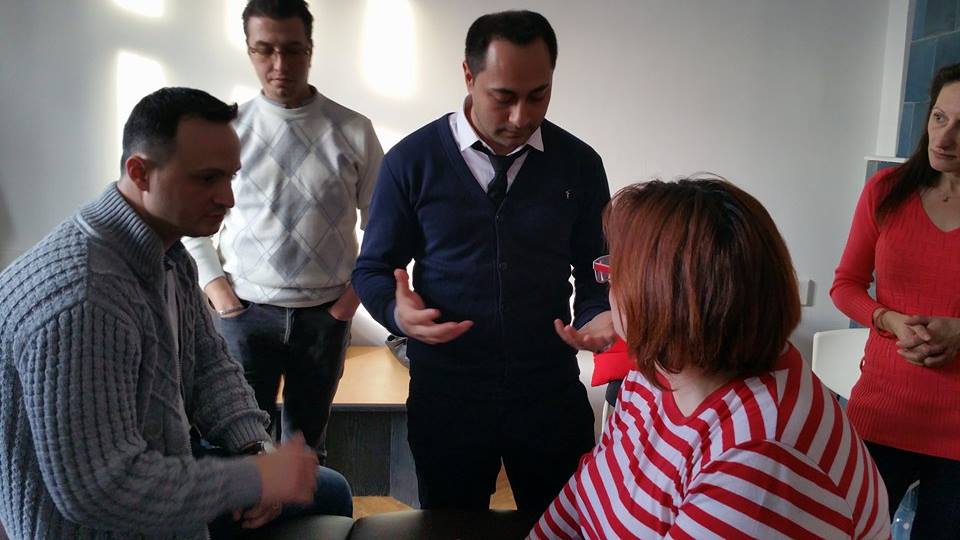On March 5th 2016 we organized a new seminar on the topic of osteopathy, biodynamic and craniosacral therapy.
This time, osteopathy specialist Sorin Ionel Calina was joined by his colleague Alex, and they both explained and exemplified the way this type of therapy works.
What did we learn?
INTEGRATED CRANIOSACRAL BYODINAMICS IS THE LEAST INVASIVE THERAPY IN THE FIELD OF MANUAL MEDICINE. IT USES TECHNIQUES THAT OPERATE WITHIN THE ENERGETIC FIELD, WITH STRONG AND IMMEDIATE RESULTS THAT ARE SUPPORTED BY SCIENTIFIC DATA.
Craniosacral Biodynamics involves the exploration of the mental and emotional processes, and their physical manifestations. The patient’s awareness of his own internal processes is also an integral component of this therapy.
Last but not least, Craniosacral Biodynamics uses each individual’s self-healing capacity towards regaining one’s physiological balance by appealing to one’s own recovery systems.
OSTEOPATHY IS A PHILOSOPHY, A SCEINCE AND AN ART FORM AIMED TO PRESERVE HEALTH AND WELLBEING
Osteopathy is a modern diagnostic and treatment method, used to detect pathological disturbances within the body’s biomechanics, employing gentle and highly refined manual techniques. The osteopath acts manually upon the structures of the skull, spine, ribcage, tailbone, the musculoskeletal system, and internal organs in order to restore their mobility and repair the detected abnormalities.
Osteopathy treats the body holistically, as a complex system where everything is interdependent, thus enabling this therapeutic method to not only suppress the symptoms of a disease or condition, but to discover and resolve its cause.
Dr. A. T. Still, the founder of this discipline, based on concepts of Greek and Egyptian medicine, developed the fundamental osteopathic principle: “Structure determines function, and function influences structure”.







 Osteopatia este o metoda moderna de diagnostic si tratament utilizata pentru depistarea tulburarilor patologice ale biomecanicii corpului, organelor si tesuturilor, cu tehnici manuale blande si de mare rafinament. Osteopatul actioneaza manual asupra structurilor craniului, coloanei, coastelor, bazinului, sacrului, articulatiilor, aparatului musculo-ligamentar si fascial, asupra organelor interne cu scopul de a indeparta disfunctiile identificate din respectivele structuri si a restabili mobilitatea lor.
Osteopatia este o metoda moderna de diagnostic si tratament utilizata pentru depistarea tulburarilor patologice ale biomecanicii corpului, organelor si tesuturilor, cu tehnici manuale blande si de mare rafinament. Osteopatul actioneaza manual asupra structurilor craniului, coloanei, coastelor, bazinului, sacrului, articulatiilor, aparatului musculo-ligamentar si fascial, asupra organelor interne cu scopul de a indeparta disfunctiile identificate din respectivele structuri si a restabili mobilitatea lor.
Osteopatia se ocupa de diagnosticul si tratamentul tulburarilor de mobilitate a tesuturilor,organelor si articulatiilor.
Osteopatia priveste organismul ca un sistem intreg ori holistic, unde totul este interdependent.
Osteopatia indeparteaza nu numai manifestarile unei boli sau indispozitii, dar descopera si inlatura eficient cauza acestei boli. Aceasta este posibil gratie cunoasterii profunde a anatomiei, fiziologiei, biomecanicii (mecanica vie) corpului omenesc. Intemeiatorul osteopatiei, doctorul A. T. Still, s-a bazat pe ce-a fost mai bun din medicina greaca si egipteana si a elaborat conceptul osteopatic “structura determina functia, iar functia influenteaza structura”.
